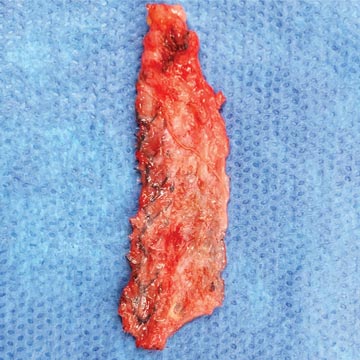What type of immune response does your surgical mesh elicit in patients? That's a question you and your surgeons should ask, says Stephen F. Badylak, DVM, MD, PhD, professor of surgery at the University of Pittsburgh School of Medicine and deputy director of the McGowan Institute for Regenerative Medicine.
“There is no biomaterial, regardless of what it’s made of, that is inert. Nothing is inert,” he says. “Everything that you put into the body elicits some type of a response. The question is, is it a favorable or a non-favorable response? The host’s response to the material is the primary determinant of success. The choice of the most appropriate surgical mesh for each individual patient is the primary determinant of downstream outcomes. The bigger question is, how do surgeons select the best mesh for each patient?”
In talking to Dr. Badylak, a pioneer in his field of regenerative medicine and tissue engineering, about the role mesh material plays in successful hernia repair, he laments the polypropylene mindset among surgeons: settling for the good-but-not-great outcomes that are predictable of synthetic mesh material — strong and quickly incorporated into host tissue — yet eliciting a pro-inflammatory immune response that leads to scar tissue and such resulting complications as pain, infection and recurrence.
“Polypropylene has been used for so long, and has such a well-characterized and expected outcome, that it’s always going to be used,” he says. “We know that we’re going to get a foreign body response, we know we’re going to get scar tissue formation, and it’s going to get socked into the tissue there. Surgeons have come to not only expect that, but in some cases desire that. It’s an acceptable outcome, but basically you have a scar plate where the surgical mesh was placed.”
Dr. Badylak also finds fault with biologically derived mesh. Yes, mesh made of extracellular matrix materials can reduce some of polypropylene’s undesirable effects, but are less frequently used due to higher cost and perceived diminishing strength as the mesh material degrades and is replaced by host tissue.
While he admits that “there is no such thing as a perfect surgical mesh,” Dr. Badylak thinks he’s developed a better mesh material, a composite material that retains the desirable mechanical properties of polypropylene without the degree of scarring that occurs — a mesh that allows for the repair strength of a synthetic mesh along with the remodeling characteristics of a biologic graft and, he says, “induces the body to basically reform the absolute normal body wall that you were born with.”
.svg?sfvrsn=be606e78_3)

.svg?sfvrsn=56b2f850_5)